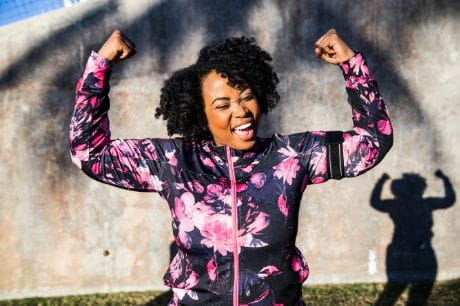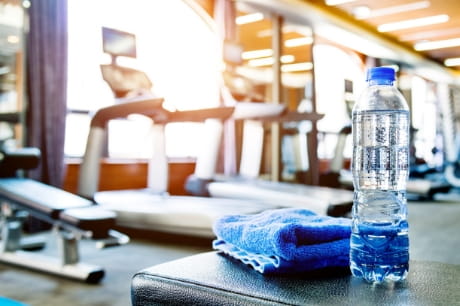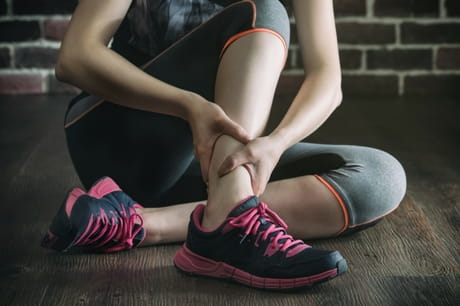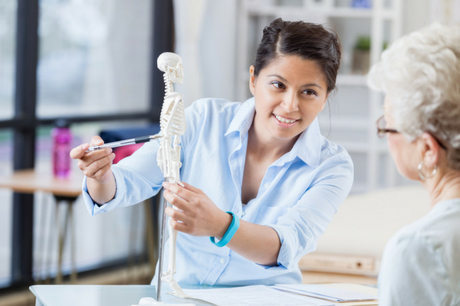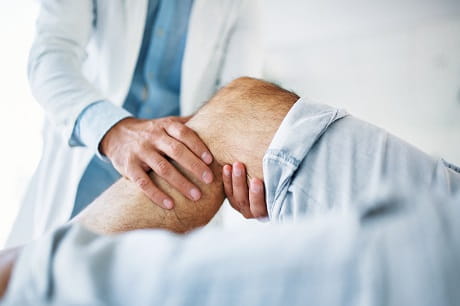What’s the link between joint pain and weight loss?
Your joints have a big job to do – they support the weight of your body and help you move all day. Simply walking, going up and down stairs, or getting out of a chair can put 3 to 5 times your body weight (or more!) on your joints. And that's if you're at a healthy weight. If you're overweight or obese, the stress on your joints drastically increases.
When you walk on level ground, the force on your knees equals one and a half times your body weight. Someone who weighs 200 pounds will put 300 pounds of pressure on their knees with each step. When you add an incline, such as walking upstairs, that force is even greater.
"Even if you're 50 pounds overweight, you're putting about 250 pounds of increased stress on your knees and hips," says Dr. Michael Christopher Sobieraj, a hip and knee orthopaedic surgeon at Geisinger.
The force on each knee is about two to three times your body weight when you go up and down stairs.
“If you bend down to tie your shoe or pick something up you dropped, the force on each of your knees is four to five times your body weight," says Dr. Sobieraj.
Obesity risk factors
Being overweight or obese impacts the body in many ways, including how it feels and functions. Over time, the excess strain and stress placed on your joints from carrying extra weight can lead to joint pain and arthritis.
"Obesity is a major risk factor for arthritis," adds Dr. Sobieraj. "The extra weight makes you much more prone to developing arthritis and can cause the condition to progress more rapidly, leading to much more pain once it has developed.”
Excess weight puts additional stress on your weight-bearing joints, such as your knees and hips. There are also inflammatory factors associated with gaining weight that may also contribute to trouble in your other joints, such as those in your hands.
While gaining weight and being overweight places excess stress and strain on your joints, losing weight has the reverse effect.
"Losing even just a small amount of weight can improve the health and function of your joints, not to mention reducing pain. For every pound you lose, you lose about three pounds of stress on your knees and about six pounds of stress on your hips," explains Dr. Sobieraj.
Health benefits of losing weight
Research has shown that over the course of 10 years, losing 10 pounds may cut your risk of developing arthritis by more than 50 percent.
"Unfortunately, losing weight cannot repair the damage that's already been done to your joints by arthritis - it's a progressive process. Losing weight can, however, alleviate your pain, allowing for better joint function," notes Dr. Sobieraj. “Losing weight can also help slow down the further progression of the disease and even prolong the period of time before joint replacement is necessary.”
When it comes to losing weight, the first and best thing you can do is stick to a healthy diet. Fill your diet with these healthy options to help lose and manage your weight:
- Fish
- Fruits
- Lean meat
- Poultry
- Vegetables
- Whole grains
For people who already have joint pain or are very overweight, lower-impact exercises that don't hurt joints are good choices.
"For some overweight or obese people, certain exercises can heighten the wear and tear on their joints, so talk to your doctor about what you can do and proceed with caution," adds Dr. Sobieraj. "In some cases, your best exercise option is to start with physical therapy, during which you'll learn how to exercise correctly."
If your joints are still healthy and in good condition, bone and muscle strengthening exercises can help promote the health of your joints. These exercises include:
- Aerobic exercise
- Jogging
- Lifting weights
- Running
- Swimming
- Walking
"If exercise is new to you, make sure you start out slowly and gradually build up your workouts to avoid injury. You could even work with a trainer to learn how to perform exercises safely and effectively," says Dr. Sobieraj.
Next steps:
Find an orthopaedic specialist
Make an appointment with Michael Christopher Sobieraj, MD
Learn more about orthopaedic care at Geisinger
